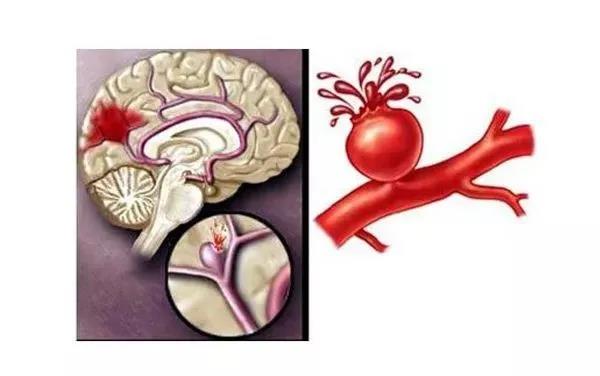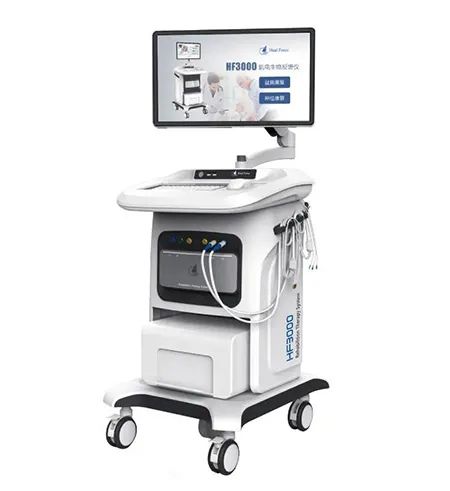-
EMG biofeedback uses electrodes placed on a patient's muscles to generate a feedback signal (in vision or sound) in response to muscle activation. It is believed that this may allow patients to learn a more effective way of using their disabled limb.
The biofeedback methods used in rehabilitation are based on biomechanical measurements and measurements of the physiological systems of the body. The physiological systems of the body which can be measured to provide biofeedback are the neuromuscular system, the respiratory system and the cardiovascular system.
As of 2018, China’s aging population reached 249 million, and it is expected to reach 370 million in 2030. In addition to the huge number, the health condition of the elderly in China is not optimistic. The average life expectancy in China in 2018 was 77 years, but the healthy life expectancy was only 68.7 years. The elderly have 8 years to accompany the disease; three-quarters of the elderly "live with disease", and more than 180 million people suffer from chronic diseases.
High incidence of cardiovascular and cerebrovascular diseases
The elderly or middle-aged and elderly people are the population with a high incidence of neurological diseases. With the intensification of China's aging, the incidence of cardiovascular and cerebrovascular diseases has gradually increased, and the incidence of stroke is particularly high. Nervous system diseases mainly originate in the central nervous system and peripheral nervous system. After getting sick, the patients will suffer from sensory dysfunction, motor nerve disorder, consciousness expression disorder and autonomic nerve disorder.
Common clinical neurological diseases
Common clinical neurological diseases include cerebrovascular disease, stroke, cerebral infarction, cerebral hemorrhage, etc. These diseases can cause serious adverse conditions in patients.
Cerebrovascular disease
Cerebrovascular diseases include cerebrovascular accidents, strokes or strokes. It is a combination of diseases in which brain blood circulation disorders and cerebral dysfunction are caused by a variety of triggers.
Pathological classification: including hemorrhagic cerebrovascular disease (cerebral hemorrhage, subarachnoid hemorrhage); cerebrovascular malformations (cerebral infarction, transient ischemic attack, etc.)
Clinical manifestations: There are often disturbances of consciousness, headaches, dyskinesias, sensory disturbances, speech disturbances, etc.

Stroke
Stroke in China is one of the diseases with high morbidity, prevalence, disability, and mortality. 60%-80% of patients will have various complications, which seriously threaten human health. According to literature statistics, there are about More than half of the surviving patients with cerebral infarction have sequelae of varying degrees, such as hemiplegia, paralysis of the limbs, and hemiplegia of the whole body or lower body, which seriously affect the patients' quality of life.
Rehabilitation of neurological diseases depends on the degree of compliance with corresponding treatment principles. Some require surgical treatment, and some only require rehabilitation exercises.
EMG Biofeedback Instrument——meets the needs of limb rehabilitation training

HF3000 EMG biofeedback trainerHow HF3000 works in neurorehabilitation
HF3000 sticks an electrode on each end of the muscle at the patient's treatment site. The electrode can accurately detect the EMG signal that the patient is not enough to cause the muscle to contract, and uses biofeedback technology to detect the patient’s own biological signal, the EMG value, which is not conscious of the patient. It is displayed in front of the patient through visual and graphical feedback, allowing the patient to re-perceive their own physiological signals and existing functions.
Significance of electromyography biofeedback technology in clinical rehabilitation
Through the correct guidance and assistance of the therapist, the method of exercise relearning is used to mobilize and stimulate the patient's awareness of active participation, "awaken" the patient's will process, and allow the patient to re-establish a positive and active cognitive process, and actively and spontaneously adjust The level of the threshold, the spontaneous brain myoelectric signal (EMG) and the external neuromuscular electrical stimulation signal (NMES) are cleverly combined, and physical electrical stimulation is used as a reward for completing the task, encouraging patients to relearn correct and effective exercise methods, strengthen or establish the patient to control the paralyzed limbs or control the pelvic floor muscles at will, so as to improve the motor function of the paralyzed limbs and restore the pelvic floor muscles.
Principles to be followed in neurorehabilitation treatment
(1) The principle of equal treatment
Nervous system diseases are referred to by clinicians as "disease and disorder coexisting" diseases. Due to the particularity of this disease, the staff must follow the principle of synchronous training and conduct the treatment together with rehabilitation training. The staff in the neurorehabilitation department must uphold the mentality of treating each other fairly and hope that each patient can be cured. From the first day the patient undergoes rehabilitation training, it is necessary to believe that rehabilitation care can help the patient return to a normal life. Moreover, rehabilitation therapy should adhere to the principle of early implementation to help patients restore the body to a satisfactory state in the shortest possible time.(2) Principles of placing the limbs in normal functional positions
Patients and family members should follow the principle of normal functional position of the limbs. Nursing staff should always help the patient to correct the position during the rehabilitation training of the patient. Then, with the help of neurorehabilitation training, the patient can exercise autonomously and change the incorrect posture caused by the limb spasm.(3) Principles of disease rehabilitation treatment
The prevalence of nerve damage can be judged based on the patient’s behavior or clinical symptoms after the illness, but this requires the doctor to have very rich neurological knowledge and clinical experience, combined with the actual condition of the patient, and treatment methods to allow the patient regain health. If patients want to carry out rehabilitation training, they must first follow the doctor's advice for treatment. Different diseases have different treatment principles. It is necessary to combine surgical treatment according to the size of the injured area and the principles of treatment. However, if only part of the injury can be treated with rehabilitation, the combined effect of rehabilitation treatment and clinical drug treatment will be more obvious.

HF3000 EMG Biofeedback Instrument—to meet the needs of limb rehabilitation training
2021-10-25 13:57:48 点击数:
